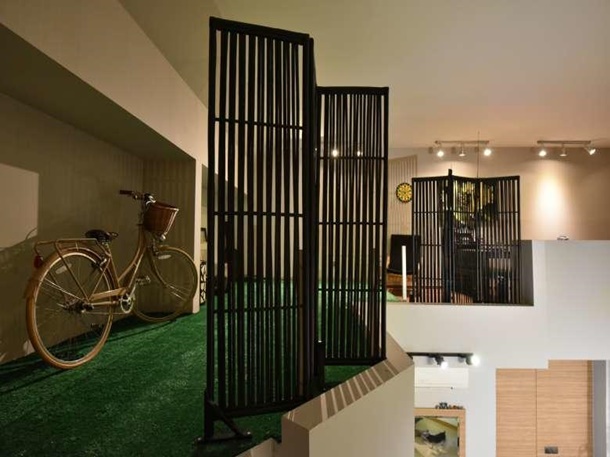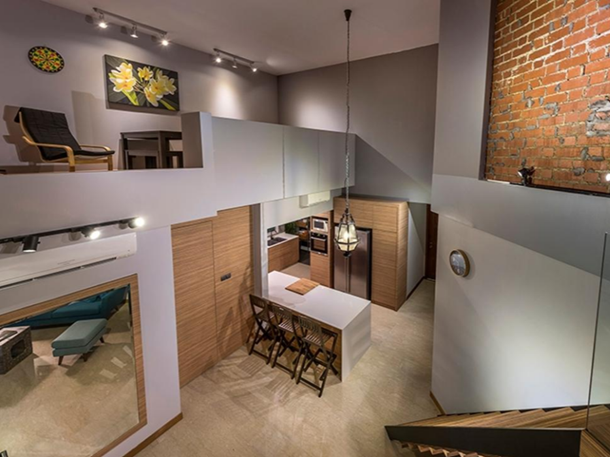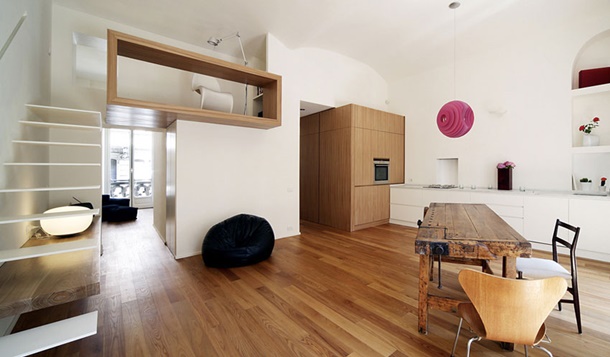There’s only so much space to be found in your home before all your furniture, cabinets, and other essentials overwhelm your house. Fortunately, one effective way you can curb with space limitation is by installing a mezzanine floor between the void spaces of your ceiling and floor.
But while it’s tempting to hack down your partitions just to accommodate one, you’ll need to adhere to the guidelines and seek approval from the relevant authorities beforehand. Here’s what you need to know:
What is a mezzanine floor?

A mezzanine floor is basically the middle floor between two structures, usually between the ceiling and ground floor of a building.
Unlike a traditional floor, a mezzanine floor is much smaller, being 25% or less than the size of a floor. It’s also usually constructed for a specific purpose, for instance, as an additional living room.
Mezzanines are commonly installed in offices, warehouses, showrooms, factories, and galleries to utilise the massive gap between the ceiling and floor, and are converted into additional, useful spaces.
What Are Executive Maisonettes and Where to Find Them
Read more here.

Because of the functional benefits that they bring, mezzanine floors are becoming increasingly popular in residential homes too, particularly among small homeowners who want more room and flexibility in their pint-sized homes. Most of the time, they are utilised as additional bedrooms, home offices, study areas, or as an extension of the living room.
However, mezzanine floors are considered illegal in Singapore. Here’s why:
Why installing a mezzanine floor is illegal in Singapore

The Urban Redevelopment Authority (URA) determines and manages what can be developed on a piece of land, and this includes the Gross Floor Area (GFA) of a property.
According to the URA, the GFA is defined as “all covered floor areas of a building, except otherwise exempted, and uncovered areas for commercial uses are deemed the gross floor area of the building for purposes of plot ratio control and development charge.”
Furthermore, the URA also considers mezzanines illegal because they are “building features that give rise to additional floor space and intensity of development.”
In other words, installing a mezzanine floor is prohibited because it alters the purpose, plot ratio, and floor space of a property.

Another reason why you can’t install a mezzanine floor is because it increases the structural weight of a building.
Remember that most buildings aren’t designed to handle additional load capacity, so the extra weight might cause the structure to collapse, which could harm the occupants in the building. This safety concern is also the same reason why the HDB does not approve mezzanine floors in HDB flats.
However, despite the strict regulations on mezzanine floors, you might notice that some owners install a mezzanine floor in their homes. Why is this so?
The short answer is that some of them are installed without permission from the relevant authorities. Of course, we don’t advocate it (because you’ll face heavy penalties in addition to harming others).
But here’s the deal: there are cases where installing a mezzanine floor can be approved; below are the steps you need to do.
How you can have a permit to install a mezzanine floor

As mentioned, mezzanine installations are few and far between, but it’s not impossible. However, there are procedures to be done beforehand (unless if you live in a landed home, then you have it easier).
Obviously, the first step is to check the floor plan of your home to determine whether it’s high enough to accommodate a mezzanine floor. Homes with a mezzanine floor installed usually have lofty ceilings.
Next, check with the developer or building management whether it is allowed. Make it clear that you plan to install a mezzanine floor and allow them to explain the procedures and requirements needed to install a mezzanine floor.
Then, you should also get approvals from both the URA and Building and Construction Authority (BCA) to ensure that the mezzanine floor is legal and the design meets the required safety standards.
Getting perfect compliance from them is the most important aspect, regardless of what carpenters, interior designers, or renovation contractors might try to tell you.
Lastly, you must also submit to the Fire Safety and Shelter Bureau (SCDF-FSSB) to comply with the fire code and to ensure that safety mechanisms like sprinklers are properly installed.
What happens if you don’t get approval
If you’re caught installing a mezzanine floor in your HDB flat illegally, you’ll get slapped with a hefty fine of up to $5,000. On top of that, you’ll also need to pay to remove the mezzanine floor and restore the flat back to its original structure. BCA and URA will also impose heavy penalties for unapproved installations.
For more property news, content and resources, check out PropertyGuru’s guides section.
Looking for a new home? Head to PropertyGuru to browse the top properties for sale in Singapore.
Need help to finance your latest property purchase? Let the mortgage experts at PropertyGuru Finance help you find the best deals.
Disclaimer: The information is provided for general information only. PropertyGuru Pte Ltd makes no representations or warranties in relation to the information, including but not limited to any representation or warranty as to the fitness for any particular purpose of the information to the fullest extent permitted by law. While every effort has been made to ensure that the information provided in this article is accurate, reliable, and complete as of the time of writing, the information provided in this article should not be relied upon to make any financial, investment, real estate or legal decisions. Additionally, the information should not substitute advice from a trained professional who can take into account your personal facts and circumstances, and we accept no liability if you use the information to form decisions.



